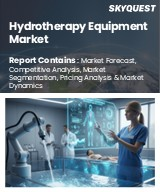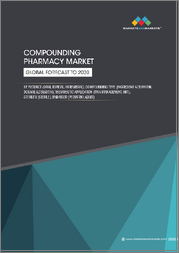
|
시장보고서
상품코드
1803870
비오피오이드 치료제 시장 : 약물 유형, 투여 경로, 용도, 최종 용도, 유통 채널별 - 세계 예측(2025-2030년)Non-Opioid Therapeutics Market by Drug Type, Route of Administration, Application, End Use, Distribution Channel - Global Forecast 2025-2030 |
||||||
비오피오이드 치료제 시장은 2024년에는 407억 7,000만 달러로 평가되었으며, 2025년에는 437억 8,000만 달러, CAGR 7.49%로 성장하여 2030년에는 629억 달러에 달할 것으로 예측됩니다.
| 주요 시장 통계 | |
|---|---|
| 기준 연도 2024년 | 407억 7,000만 달러 |
| 추정 연도 2025년 | 437억 8,000만 달러 |
| 예측 연도 2030년 | 629억 달러 |
| CAGR(%) | 7.49% |
첨단 분자 표적, 환자 중심 솔루션, 공동 혁신을 통해 비오피오이드 치료제의 새로운 시대를 열고 통증 관리를 혁신합니다.
비오피오이드 치료제가 의료 혁신의 최전선에 뛰어들면서 통증 관리의 진화는 근본적인 전환을 맞이하고 있습니다. 이러한 급성장의 배경에는 최첨단 분자 연구, 환자 중심의 치료 모델, 그리고 안전성과 유효성을 우선시하는 세계 규제 환경의 융합이 있습니다. 기존의 오피오이드 의존성에서 벗어나기 위해 업계는 확고한 임상 결과를 유지하면서 의존성 위험을 줄일 수 있는 새로운 치료법의 길을 열어가고 있습니다.
새로운 양식, 규제 재편, 디지털 건강의 통합으로 비오피오이드 치료제의 상황을 재정의하는 변혁적 변화를 보여줍니다.
비오피오이드 치료제의 현재 상황은 새로운 양식, 규제 재편, 기술 통합 등 혁신적인 변화로 인해 재편되고 있습니다. 예를 들어, 차세대 이온 채널 조절제 및 펩타이드 기반 치료제의 등장은 약리학적 툴킷을 재정의하고 있습니다. 이와 함께 주요 시장의 규제 당국은 규제 대상 물질에 비해 안전성이 우수한 치료제에 대한 신속한 승인을 간소화하기 위한 최신 가이드라인을 발표했습니다.
2025년 미국 관세가 비오피오이드 치료제의 공급망, 가격 구조, 세계 무역 역학에 미치는 종합적인 영향 분석
2025년 미국의 관세 도입은 비오피오이드 치료제의 개발 및 유통을 지원하는 세계 공급망에 큰 압력을 가하고 있습니다. 수입 원료의약품에 의존하는 제조업체들은 조달 비용 상승에 직면하여 공급업체와의 관계 및 니어쇼어링 전략을 재평가하고 있습니다. 이에 반해 일부 중견 제조사들은 연속성과 비용 예측 가능성을 확보하기 위해 현지 조달 계약을 시작했습니다.
약물 유형, 투여 경로, 임상 용도, 최종 용도, 유통 채널에 대한 주요 인사이트를 통해 비오피오이드 치료제 시장 현황을 파악합니다.
약물 유형별 세분화를 통해 얻은 인사이트에 따르면, 아세트아미노펜 유도체는 여전히 급성 통증 완화의 핵심인 반면, 항우울제 기전의 발전으로 만성 통증 완화를 위한 새로운 경로가 밝혀지고 있습니다. 또한, 항경련제 개발과 더불어 신경병증성 통증 관리에의 적용이 기대되고 있으며, 국소 마취제의 혁신이 수술 전후 의료를 강화시키고 있습니다. 비스테로이드성 항염증제는 차세대 제형에 의해 위장 내약성이 개선되어 다양한 염증성 질환에 대한 적응증을 보유하고 있습니다.
시장 침투, 환자 접근성, 성장 기회를 형성하는 아메리카, 유럽, 중동 및 아프리카, 아시아태평양 역학 탐색
아메리카에서는 규제 당국이 비중독성 프로파일을 보이는 치료제를 우선적으로 승인하도록 승인 프로세스를 조정하고, 탄탄한 임상 파이프라인을 육성하고, 벤처 캐피탈의 투자를 촉진하고 있습니다. 의료보험의 상환 모델에서 비오피오이드 대체약물에 대한 대응이 진행되고 있으며, 환자 옹호 단체는 혁신적인 치료법에 대한 접근성을 확대하도록 정책에 영향을 미치고 있습니다. 이러한 지역적 분위기는 제품 출시를 가속화하고 종합적 통증 관리의 파일럿 프로그램을 위한 비옥한 토양을 조성하고 있습니다.
비오피오이드 치료제 부문의 R&D 및 상용화를 촉진하는 주요 업계 플레이어와 혁신적인 파트너십을 파악
업계를 선도하는 기업들은 비오피오이드 치료제 분야에서 경쟁 우위를 유지하기 위해 다각적인 전략을 채택하고 있습니다. 광범위한 R&D 역량을 보유한 세계 제약사들은 자체 신약개발 프로그램이나 바이오 혁신기업을 인수하는 방식으로 포트폴리오를 확장하고 있습니다. 동시에, 비오피오이드 전문가들은 중개 연구를 가속화하기 위해 학술 센터 및 위탁 연구 기관과 파트너십을 맺고 있습니다.
비오피오이드 치료제의 협업을 강화하고, 혁신을 가속화하며, 복잡한 규제를 극복하기 위해 업계 리더들에게 전략적이고 실행 가능한 제안을 제시합니다.
업계 리더들은 파이프라인의 발전을 가속화하기 위해 학술 연구와 상업적 개발을 연결하는 전략적 제휴를 우선시해야 합니다. 공유된 전문 지식과 리소스 풀을 활용함으로써 조직은 초기 단계의 리스크를 줄이고 후보물질의 검증을 강화할 수 있습니다. 동시에 규제 기준의 조정을 주장하는 컨소시엄을 구성하여 승인 경로를 간소화하고 시판까지 걸리는 시간을 단축할 수 있습니다.
시장 분석 지원, 1차 인터뷰, 2차 데이터 검증, 전문가 패널 검토를 포함한 종합적인 2차 정보 조사 방법론에 대한 자세한 내용
본 분석은 일차 정보와 이차 정보 소스를 결합한 강력한 다원적 조사 기법으로 뒷받침됩니다. 1차 조사에서는 제약사, 바이오테크 기업, 헬스케어 제공업체 경영진과의 심층 인터뷰와 규제 당국 전문가 및 주요 오피니언 리더와의 의견 교환을 통해 새로운 트렌드와 전략적 우선순위를 확인했습니다.
미충족 수요를 충족하고, 지속적인 성장을 촉진하며, 전 세계적으로 환자 치료 결과를 개선하는 비오피오이드 치료제의 혁신 가능성을 강조하는 마무리 발언
비오피오이드 치료제의 대중화를 향한 여정은 기술 혁신, 전략적 협력, 진화하는 규제 환경으로 특징지어집니다. 오피오이드 의존성 감소라는 공통의 명제 아래 이해관계자들이 한 목소리를 내고 있는 가운데, 이 분야에서는 새로운 분자 실체, 디지털 헬스 통합, 환자 중심 치료 모델이 그 어느 때보다 급증하고 있습니다.
목차
제1장 서문
제2장 조사 방법
제3장 주요 요약
제4장 시장 개요
제5장 시장 역학
제6장 시장 인사이트
- Porter's Five Forces 분석
- PESTEL 분석
제7장 미국 관세의 누적 영향 2025
제8장 비오피오이드 치료제 시장 : 약제 종류별
- 아세트아미노펜
- 항우울제
- 항경련제
- 국소 마취제
- 비스테로이드성 항염증제
제9장 비오피오이드 치료제 시장 : 투여 경로별
- 정맥내
- 경구
- 직장
제10장 비오피오이드 치료제 시장 : 용도별
- 암관련 통증
- 만성 통증
- 염증성 질환
- 편두통
- 신경퇴행성 질환
제11장 비오피오이드 치료제 시장 : 최종 용도별
- 외래 수술 센터
- 진단 센터
- 재택 케어 설정
- 병원과 진료소
제12장 비오피오이드 치료제 시장 : 유통 채널별
- 병원 약국
- 온라인 약국
- 소매 약국
제13장 아메리카의 비오피오이드 치료제 시장
- 미국
- 캐나다
- 멕시코
- 브라질
- 아르헨티나
제14장 유럽, 중동 및 아프리카의 비오피오이드 치료제 시장
- 영국
- 독일
- 프랑스
- 러시아
- 이탈리아
- 스페인
- 아랍에미리트
- 사우디아라비아
- 남아프리카공화국
- 덴마크
- 네덜란드
- 카타르
- 핀란드
- 스웨덴
- 나이지리아
- 이집트
- 튀르키예
- 이스라엘
- 노르웨이
- 폴란드
- 스위스
제15장 아시아태평양의 비오피오이드 치료제 시장
- 중국
- 인도
- 일본
- 호주
- 한국
- 인도네시아
- 태국
- 필리핀
- 말레이시아
- 싱가포르
- 베트남
- 대만
제16장 경쟁 구도
- 시장 점유율 분석, 2024
- FPNV 포지셔닝 매트릭스, 2024
- 경쟁 분석
- AbbVie Inc.
- GlaxoSmithKline plc
- Acorda Therapeutics, Inc.
- Allay Therapeutics Inc.
- Alnylam Pharmaceuticals, Inc.
- Biogen Inc.
- Centrexion Therapeutics,
- Concentric Analgesics, Inc.
- Confo Therapeutics NV
- Durect Corporation
- Eli Lilly and Company
- Latigo Biotherapeutics, Inc.
- Lexicon Pharmaceuticals, Inc.
- Liquidia Corporation
- McNeil-PPC, Inc. by Johnson & Johnson Inc.
- Mylan N.V. by Viatris Inc.
- Neumentum Inc.
- SiteOne Therapeutics, Inc.
- Sun Pharmaceutical Industries Limited
- Tris Pharma, Inc.
- Vertex Pharmaceuticals Incorporated
- Pfizer Inc.
- Amgen Inc.
- Cara Therapeutics, Inc.
- Bioelectronics Corporation
제17장 리서치 AI
제18장 리서치 통계
제19장 리서치 컨택트
제20장 리서치 기사
제21장 부록
KSM 25.09.10The Non-Opioid Therapeutics Market was valued at USD 40.77 billion in 2024 and is projected to grow to USD 43.78 billion in 2025, with a CAGR of 7.49%, reaching USD 62.90 billion by 2030.
| KEY MARKET STATISTICS | |
|---|---|
| Base Year [2024] | USD 40.77 billion |
| Estimated Year [2025] | USD 43.78 billion |
| Forecast Year [2030] | USD 62.90 billion |
| CAGR (%) | 7.49% |
Pioneering a New Era in Non-Opioid Therapeutics through Advanced Molecular Targets, Patient-Centric Solutions, and Collaborative Innovation to Transform Pain Management
The evolution of pain management is undergoing a fundamental shift as non-opioid therapeutics ascend to the forefront of medical innovation. This surge is rooted in the convergence of advanced molecular research, patient-centered care models, and a global regulatory environment that prioritizes safety and efficacy. By moving beyond traditional opioid reliance, the industry is opening avenues for novel therapeutic modalities that promise to reduce dependency risks while maintaining robust clinical outcomes.
As a result, stakeholders across the value chain are collaborating to harness the potential of targeted small molecules, biologics, and innovative drug delivery systems. These efforts reflect a broad commitment to addressing chronic pain, inflammatory disorders, and neurodegenerative conditions with modalities that can offer comparable relief to opioids but with enhanced safety profiles. Moreover, advancements in biomarkers and genomics are enabling more personalized treatment strategies, aligning with the growing demand for precision medicine.
Consequently, the non-opioid therapeutics sector is positioned for a transformative trajectory. From early-stage research to late-phase clinical trials, the integration of cross-disciplinary expertise is driving accelerated innovation. As this introductory analysis establishes, the industry's renewed focus on collaborative research, regulatory alignment, and patient wellbeing lays a solid foundation for sustained growth and long-term impact.
Unveiling the Transformative Shifts Redefining the Non-Opioid Therapeutics Landscape with Emerging Modalities, Regulatory Realignments, and Digital Health Integration
The current landscape of non-opioid therapeutics is being reshaped by transformative shifts that encompass emerging modalities, regulatory realignments, and technology integration. For instance, the rise of next-generation ion channel modulators and peptide-based therapies is redefining the pharmacological toolkit. In parallel, regulatory bodies in key markets have issued updated guidelines that streamline expedited pathways for therapies demonstrating favorable safety margins compared to controlled substances.
Furthermore, digital health applications and remote monitoring platforms are enhancing treatment adherence and enabling real-time patient feedback, which, in turn, inform continuous improvement in therapeutic protocols. This digital infusion is complementing pharmacological advances by facilitating more nuanced patient engagement and outcome measurement. As a result, healthcare providers are increasingly adopting integrated care models that bridge pharmacotherapy with digital support services.
In addition, strategic alliances between academic institutions, mid-sized biotechnology firms, and contract research organizations are accelerating preclinical to clinical transitions. By leveraging shared resources and multidisciplinary expertise, these collaborations are reducing development timelines while maintaining rigorous scientific validation. These collective initiatives are driving the paradigm shift from opioid-centric pain management toward diversified, non-addictive therapeutic approaches.
Analyzing the Comprehensive Impact of the 2025 United States Tariffs on Non-Opioid Therapeutics Supply Chains, Pricing Structures, and Global Trade Dynamics
The introduction of the 2025 United States tariffs has exerted significant pressure on the global supply chains underpinning non-opioid therapeutic development and distribution. Manufacturers reliant on imported active pharmaceutical ingredients have faced elevated procurement costs, prompting a reevaluation of supplier relationships and nearshoring strategies. In response, several mid-sized producers have initiated localized sourcing agreements to safeguard continuity and cost predictability.
Meanwhile, pricing structures throughout the distribution network have adjusted to reflect the altered cost base, affecting both contract negotiations with large health systems and procurement practices at retail outlets. This shift has underscored the importance of dynamic pricing strategies that balance margin protection with accessibility for end users. Consequently, organizations are deploying advanced analytics to model tariff pass-through scenarios and to optimize channel-specific pricing architectures.
Concurrently, global trade dynamics have prompted companies to diversify manufacturing footprints across multiple jurisdictions. Establishing secondary production nodes in regions with favorable trade agreements has mitigated exposure to unilateral tariff increases. As a result, resilience planning now occupies a central role in strategic roadmaps, ensuring that the non-opioid therapeutics sector remains agile amid evolving geopolitical landscapes.
Deriving Key Insights from Drug Type, Administration Route, Clinical Application, End Use, and Distribution Channel to Map the Non-Opioid Therapeutics Market Landscape
Insights derived from drug type segmentation reveal that acetaminophen derivatives remain a cornerstone for acute pain relief, while advancements in antidepressant mechanisms are unlocking new pathways for chronic pain modulation. Parallel developments in antiepileptics are showing promise for neuropathic pain management, and innovations in local anesthetics are enhancing perioperative care. Nonsteroidal anti-inflammatory drugs continue to serve a broad spectrum of inflammatory indications, with next-generation formulations improving gastrointestinal tolerability.
When evaluating route of administration and application segments, the intravenous channel has gained traction for rapid-onset interventions in hospital settings, whereas oral therapies offer convenience and adherence in chronic care scenarios. Rectal delivery, though less prominent, persists as an alternative for patients requiring non-oral dosing. In terms of clinical focus, cancer related pain management is benefitting from multimodal regimens that integrate pharmacological and supportive therapies. Chronic pain protocols are evolving with combination approaches that leverage centrally acting agents. Inflammatory disorders, migraine relief, and neurodegenerative pain syndromes are all seeing targeted therapeutic designs informed by enhanced pathophysiological understanding.
Examining end use and distribution channels underscores the growing role of ambulatory surgical centers and diagnostic centers in outpatient pain management. Home care settings are expanding as telehealth-enabled nursing services provide continuous support. Hospitals and clinics remain critical for acute intervention. Meanwhile, hospital pharmacies lead in dispensing specialized non-opioid formulations. Online pharmacies are driving accessibility for maintenance therapies, and retail pharmacies continue to serve as the primary point of contact for over-the-counter anti-inflammatory and analgesic products.
Exploring Distinct Regional Dynamics across the Americas, Europe Middle East & Africa, and Asia-Pacific Shaping Market Penetration, Patient Access, and Growth Opportunities
In the Americas, regulatory agencies have harmonized approval processes to prioritize therapeutics demonstrating non-addictive profiles, fostering robust clinical pipelines and encouraging venture capital investment. Healthcare reimbursement models are increasingly accommodating non-opioid alternatives, and patient advocacy groups are influencing policy to expand access to innovative therapies. This regional momentum is accelerating product launches and creating a fertile ground for pilot programs in integrated pain management.
Across Europe, the Middle East & Africa, stakeholders face a diverse tapestry of regulatory frameworks and reimbursement structures. In Western Europe, strong pharmacovigilance measures and centralized approval systems are driving the adoption of novel compounds. Meanwhile, in select Middle Eastern and African markets, growing demand for cost-effective non-opioid options is inspiring local manufacturing initiatives. Cross-border collaborations and public-private partnerships are critical in addressing infrastructure gaps and streamlining distribution pathways.
The Asia-Pacific region is witnessing rapid growth underpinned by rising healthcare expenditure and expanding hospital networks. Regulatory authorities in key markets have introduced fast-track designations for therapies addressing opioid dependence. Additionally, digital health ecosystems are maturing, enabling better patient monitoring and adherence tracking. Regional manufacturing clusters are also emerging as strategic export hubs, further integrating Asia-Pacific into global supply chains.
Illuminating Leading Industry Players and Innovative Partnerships Driving Research, Development, and Commercialization in the Non-Opioid Therapeutics Sector
Leading industry players are adopting multifaceted strategies to maintain competitive advantage in the non-opioid therapeutics arena. Global pharmaceutical companies with extensive R&D capabilities are expanding their portfolios through internal discovery programs and targeted acquisitions of biotech innovators. At the same time, dedicated non-opioid specialists are forging partnerships with academic centers and contract research organizations to accelerate translational research.
Beyond traditional pharma, technology-driven start-ups are integrating digital biomarkers and artificial intelligence to optimize dosing regimens and predict patient response. This convergence of software and pharmacology is redefining value propositions and enabling more nuanced differentiation among therapeutic candidates. In parallel, manufacturing service providers are investing in flexible production platforms capable of handling peptide-based therapies and other complex molecules, thereby meeting the evolving demands of their pharmaceutical clients.
Collectively, these strategic movements underscore a sectorwide commitment to innovation, quality, and patient-centric outcomes. Enhanced collaboration between established players and nimble innovators is catalyzing a synergistic ecosystem where each participant contributes unique expertise toward the shared goal of delivering effective non-opioid solutions.
Presenting Strategic, Actionable Recommendations for Industry Leaders to Enhance Collaboration, Accelerate Innovation, and Navigate Regulatory Complexities in Non-Opioid Therapeutics
Industry leaders should prioritize strategic alliances that bridge academic research with commercial development to accelerate pipeline progression. By leveraging shared expertise and resource pools, organizations can mitigate early-stage risks and enhance candidate validation. Simultaneously, forming consortia that advocate for harmonized regulatory standards will streamline approval pathways and reduce time to market.
Investing in advanced analytics and digital health solutions is another critical recommendation. Implementing real-world evidence platforms will enable continuous post-launch monitoring of safety and efficacy, thereby reinforcing stakeholder confidence. Moreover, integrating patient engagement tools can improve adherence rates and inform iterative product enhancements.
Supply chain resilience must remain a focal point. To this end, diversifying sourcing strategies and establishing backup manufacturing nodes will minimize the disruptive impact of geopolitical shifts and tariff fluctuations. Finally, fostering a culture of cross-functional collaboration-uniting R&D, regulatory affairs, commercial teams, and patient advocacy groups-will ensure that therapeutic offerings are aligned with evolving clinical needs and market dynamics.
Detailing the Comprehensive Multi-Source Research Methodology Underpinning the Market Analysis, Incorporating Primary Interviews, Secondary Data Validation, and Expert Panel Reviews
This analysis is underpinned by a robust, multi-phase research methodology combining primary and secondary data sources. Primary research involved in-depth interviews with senior executives across pharmaceutical, biotechnology, and healthcare provider organizations, alongside discussions with regulatory experts and key opinion leaders to validate emerging trends and strategic priorities.
Secondary research encompassed a comprehensive review of peer-reviewed journals, conference proceedings, patent filings, regulatory agency publications, and industry whitepapers to build a foundational understanding of technological, clinical, and policy developments. Data triangulation techniques were employed to ensure consistency and accuracy across disparate information streams.
Expert panel reviews provided additional validation, enabling refinement of thematic insights and strategic imperatives. Quantitative and qualitative findings were synthesized to produce a nuanced, evidence-based narrative that reflects both macro-level dynamics and granular operational considerations.
Concluding Remarks Emphasizing the Transformative Potential of Non-Opioid Therapeutics to Meet Unmet Needs, Drive Sustainable Growth, and Improve Patient Outcomes Globally
The journey toward widespread adoption of non-opioid therapeutics is marked by innovation, strategic collaboration, and evolving regulatory landscapes. As stakeholders align around the shared imperative to reduce opioid dependency, the sector is witnessing an unprecedented surge in novel molecular entities, digital health integrations, and patient-centric care models.
Regional dynamics and tariff implications underscore the need for adaptive strategies that balance cost resilience with market expansion. Segmentation insights reveal targeted opportunities across drug types, administration routes, clinical applications, and distribution channels. Leading companies are leveraging partnerships, technological capabilities, and manufacturing flexibility to capture these opportunities, while actionable recommendations emphasize the importance of cross-functional collaboration and advanced analytics.
Ultimately, the non-opioid therapeutics sector is poised to transform pain management paradigms and improve patient outcomes globally. By harnessing these insights, industry participants can make informed decisions that drive meaningful progress and sustainable growth in this critical therapeutic domain.
Table of Contents
1. Preface
- 1.1. Objectives of the Study
- 1.2. Market Segmentation & Coverage
- 1.3. Years Considered for the Study
- 1.4. Currency & Pricing
- 1.5. Language
- 1.6. Stakeholders
2. Research Methodology
- 2.1. Define: Research Objective
- 2.2. Determine: Research Design
- 2.3. Prepare: Research Instrument
- 2.4. Collect: Data Source
- 2.5. Analyze: Data Interpretation
- 2.6. Formulate: Data Verification
- 2.7. Publish: Research Report
- 2.8. Repeat: Report Update
3. Executive Summary
4. Market Overview
- 4.1. Introduction
- 4.2. Market Sizing & Forecasting
5. Market Dynamics
- 5.1. Emergence of topical anti inflammatory formulations utilizing next generation liposomal delivery systems for localized pain control
- 5.2. Expansion of novel sodium channel blockers for chronic neuropathic pain management in aging populations
- 5.3. Regulatory fast track approvals encouraging development of novel cholecystokinin receptor modulators for post operative pain relief
- 5.4. Integration of virtual reality and digital therapeutics for non opioid pain treatment across rehabilitation settings
- 5.5. Adoption of transcriptome-based biomarkers to personalize non opioid analgesic therapies and improve clinical outcomes
- 5.6. Rising investment in monoclonal antibodies targeting nerve growth factor for osteoarthritis and lower back pain relief
- 5.7. Strategic partnerships between biotech and digital health firms to accelerate non opioid pain management solutions
6. Market Insights
- 6.1. Porter's Five Forces Analysis
- 6.2. PESTLE Analysis
7. Cumulative Impact of United States Tariffs 2025
8. Non-Opioid Therapeutics Market, by Drug Type
- 8.1. Introduction
- 8.2. Acetaminophen
- 8.3. Antidepressants
- 8.4. Antiepileptics
- 8.5. Local Anesthetics
- 8.6. Nonsteroidal Anti-Inflammatory Drugs
9. Non-Opioid Therapeutics Market, by Route of Administration
- 9.1. Introduction
- 9.2. Intravenous
- 9.3. Oral
- 9.4. Rectal
10. Non-Opioid Therapeutics Market, by Application
- 10.1. Introduction
- 10.2. Cancer Related Pain
- 10.3. Chronic Pain
- 10.4. Inflammatory Disorders
- 10.5. Migraine
- 10.6. Neurodegenerative Disorders
11. Non-Opioid Therapeutics Market, by End Use
- 11.1. Introduction
- 11.2. Ambulatory Surgical Centers
- 11.3. Diagnostic Centers
- 11.4. Home Care Settings
- 11.5. Hospitals & Clinics
12. Non-Opioid Therapeutics Market, by Distribution Channel
- 12.1. Introduction
- 12.2. Hospital Pharmacies
- 12.3. Online Pharmacies
- 12.4. Retail Pharmacies
13. Americas Non-Opioid Therapeutics Market
- 13.1. Introduction
- 13.2. United States
- 13.3. Canada
- 13.4. Mexico
- 13.5. Brazil
- 13.6. Argentina
14. Europe, Middle East & Africa Non-Opioid Therapeutics Market
- 14.1. Introduction
- 14.2. United Kingdom
- 14.3. Germany
- 14.4. France
- 14.5. Russia
- 14.6. Italy
- 14.7. Spain
- 14.8. United Arab Emirates
- 14.9. Saudi Arabia
- 14.10. South Africa
- 14.11. Denmark
- 14.12. Netherlands
- 14.13. Qatar
- 14.14. Finland
- 14.15. Sweden
- 14.16. Nigeria
- 14.17. Egypt
- 14.18. Turkey
- 14.19. Israel
- 14.20. Norway
- 14.21. Poland
- 14.22. Switzerland
15. Asia-Pacific Non-Opioid Therapeutics Market
- 15.1. Introduction
- 15.2. China
- 15.3. India
- 15.4. Japan
- 15.5. Australia
- 15.6. South Korea
- 15.7. Indonesia
- 15.8. Thailand
- 15.9. Philippines
- 15.10. Malaysia
- 15.11. Singapore
- 15.12. Vietnam
- 15.13. Taiwan
16. Competitive Landscape
- 16.1. Market Share Analysis, 2024
- 16.2. FPNV Positioning Matrix, 2024
- 16.3. Competitive Analysis
- 16.3.1. AbbVie Inc.
- 16.3.2. GlaxoSmithKline plc
- 16.3.3. Acorda Therapeutics, Inc.
- 16.3.4. Allay Therapeutics Inc.
- 16.3.5. Alnylam Pharmaceuticals, Inc.
- 16.3.6. Biogen Inc.
- 16.3.7. Centrexion Therapeutics,
- 16.3.8. Concentric Analgesics, Inc.
- 16.3.9. Confo Therapeutics NV
- 16.3.10. Durect Corporation
- 16.3.11. Eli Lilly and Company
- 16.3.12. Latigo Biotherapeutics, Inc.
- 16.3.13. Lexicon Pharmaceuticals, Inc.
- 16.3.14. Liquidia Corporation
- 16.3.15. McNeil-PPC, Inc. by Johnson & Johnson Inc.
- 16.3.16. Mylan N.V. by Viatris Inc.
- 16.3.17. Neumentum Inc.
- 16.3.18. SiteOne Therapeutics, Inc.
- 16.3.19. Sun Pharmaceutical Industries Limited
- 16.3.20. Tris Pharma, Inc.
- 16.3.21. Vertex Pharmaceuticals Incorporated
- 16.3.22. Pfizer Inc.
- 16.3.23. Amgen Inc.
- 16.3.24. Cara Therapeutics, Inc.
- 16.3.25. Bioelectronics Corporation



















